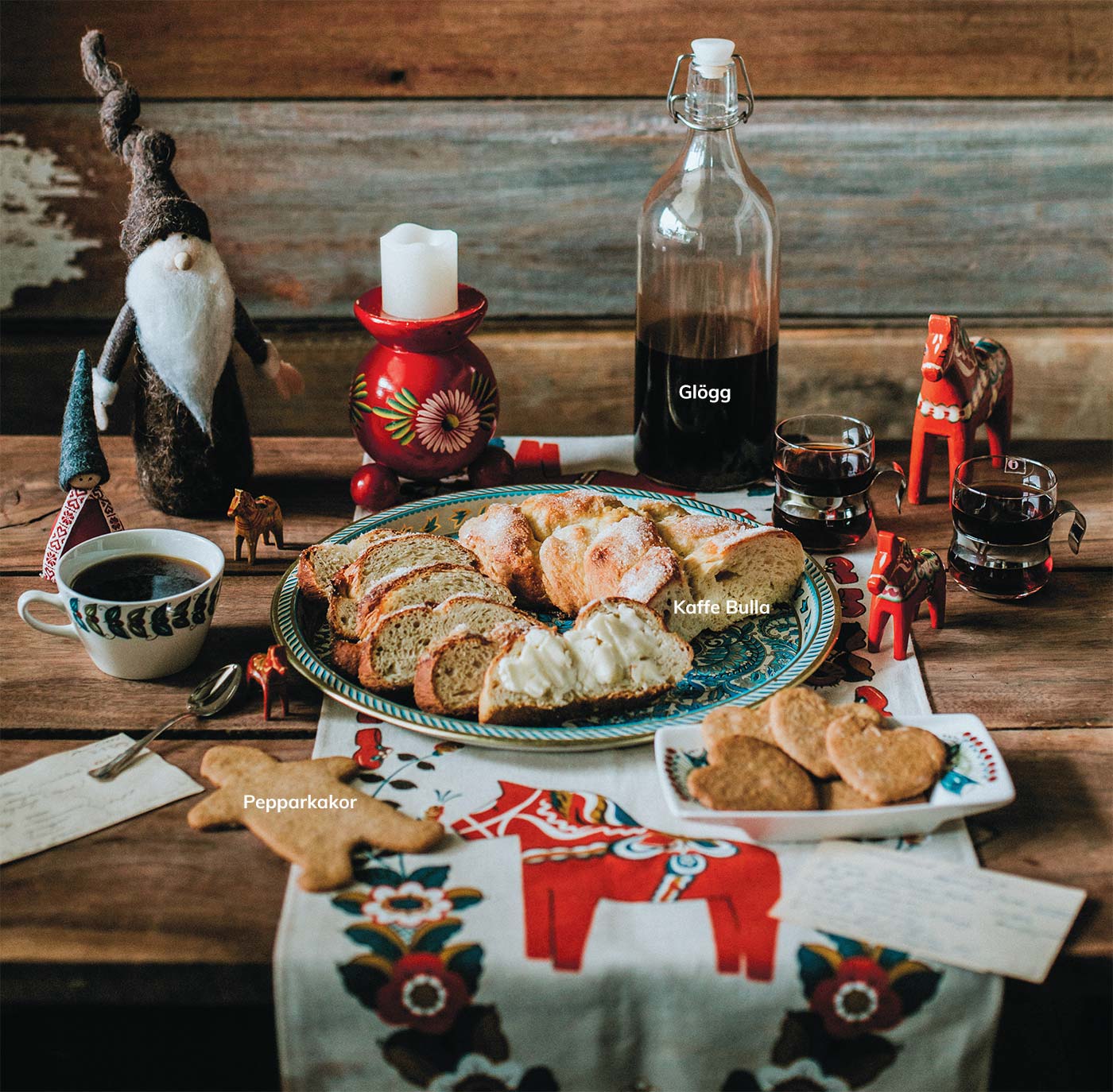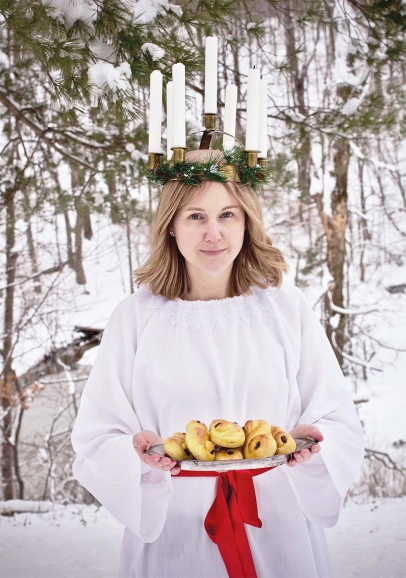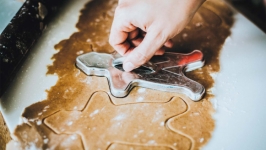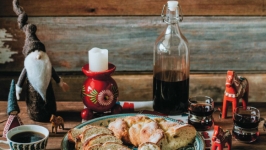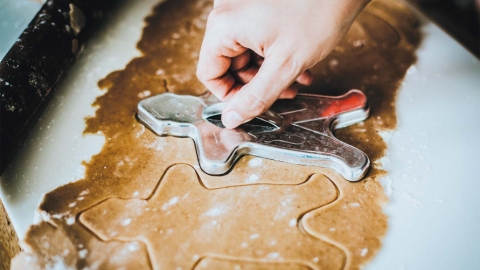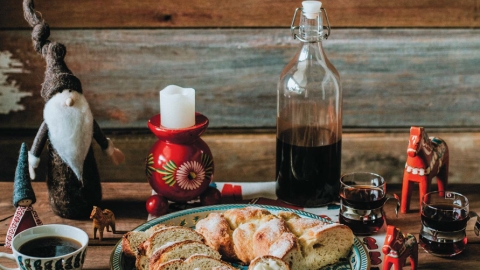A Swedish Jul (Christmas) with Hannah Lindgren
As the winter holiday season approaches, Hannah Lindgren does what a lot of us do: She pulls out heirloom decorations and stocks up on ingredients for family recipes. Yet for the Indianapolis-based filmmaker, Christmas doesn’t mean Santa figurines and sugar cookies. Instead, Hannah dusts off the Julbocken (Christmas goat), and bakes fragrant batches of pepparkakor, or ginger cookies (see recipe on page 32), sentimental symbols of her Swedish heritage.
“For me, 95% of my Christmas decorations are Swedish, because that’s Christmas to me,” says Hannah, 28, a producer at The Story Shop in Pendleton. “Instead of Santa Clauses I have Jultomtens [Swedish Father Christmas] or I have Dala horses [traditional carved horse statues]. All these things mean Christmas to me because that’s what I grew up with.”
A SWEDISH HERITAGE
For most of her life, Hannah has had a keen awareness of her Swedishness, which comes to her through her father’s side of the family. Her dad is of 100% Swedish heritage, which makes her half Swedish. Grandparents on one side of her dad’s family and great-grandparents on the other emigrated from Sweden, “but they all lived within this close-knit Swedish community, and they just kept marrying fellow Swedes,” she explains. Because her dad grew up in an environment where his mother spoke Swedish with her parents, “[their culture] was still just very present, which I feel is rarer and rarer unless you’re a first-generation immigrant.”
Over the years, both Hannah’s parents, Jim Lindgren and Brenda Myers, have been instrumental in passing along all things Swedish—Jim through his interest in genealogy, and Brenda, who’s not Swedish, by taking up the mantle of preserving family recipes and traditions.
“Mom saw how important it was to my dad’s family, and so she made sure that it was a part of our lives from the beginning,” Hannah says.
Take Christmas, for instance. Hannah’s family spent the holiday with Jim’s side of the family most years. “Christmas to me was just equated with being Swedish,” she says. “It was about the smorgasbord, it was about meatballs. When I was a kid it was about all these weird foods I didn’t want to eat, like potato sausage and pickled herring. All these things were totally unappealing to me, but they were just ever-present, especially with holidays.”
CELEBRATING ST. LUCIA'S DAY
Whereas Christmas itself was spent with her extended family, most years Hannah and her relatives celebrated St. Lucia’s Day, or the Festival of Lights, with the local SVEA Lodge No. 253 of the Vasa Order of America, a Swedish American fraternal organization, to which Jim has belonged since Hannah was a young girl.
“My entire life that also has been present, this community of Swedes, and mostly that presented itself when I was a kid at the two major Swedish holidays,” Hannah says. “My year always had Midsommar in the middle of the year and Lucia Day to start the Christmas season, and those were celebrated with the lodge.”
St. Lucia’s Day falls on December 13, the winter solstice, or the shortest (and darkest) day of the year, according to the old Julian calendar. (The Gregorian calendar we use today places the solstice on December 21 or 22.) The festival is named after St. Lucia, a young girl martyred for her Christian faith, who according to legend wore candles on her head so she could use her hands to carry food to orphans. Lucia, from the Latin lux, also means light.
At home, Swedes commemorate St. Lucia’s Day with the oldest girl in the family baking breads and pastries and serving them to her family. But the holiday also is recognized publicly. At the local SVEA Lodge No. 253, the celebration is a community affair, with the lodge choosing one girl each year to be their St. Lucia. Girls typically are chosen around the age of 15, but since there isn’t always a 15-year-old among the members, girls also just age into the role. Hannah was 11 when her turn came.
“It was always a big deal when you became old enough and you were the next Lucia,” Hannah explains. “Your family gets a table of honor. Even family from my mom’s side came.”
As St. Lucia, Hannah wore a white robe and a wreath of candles on her head. She led the procession into the lodge, followed by the other children: Lucia’s helpers, girls dressed in white and each holding a single candle, and Stjäerngossen, or Star Boys, wearing pointed hats and carrying star wands. Once on stage, the children recited passages and sang traditional songs before the whole lodge feasted on Julbord, or Swedish Christmas smorgasbord.
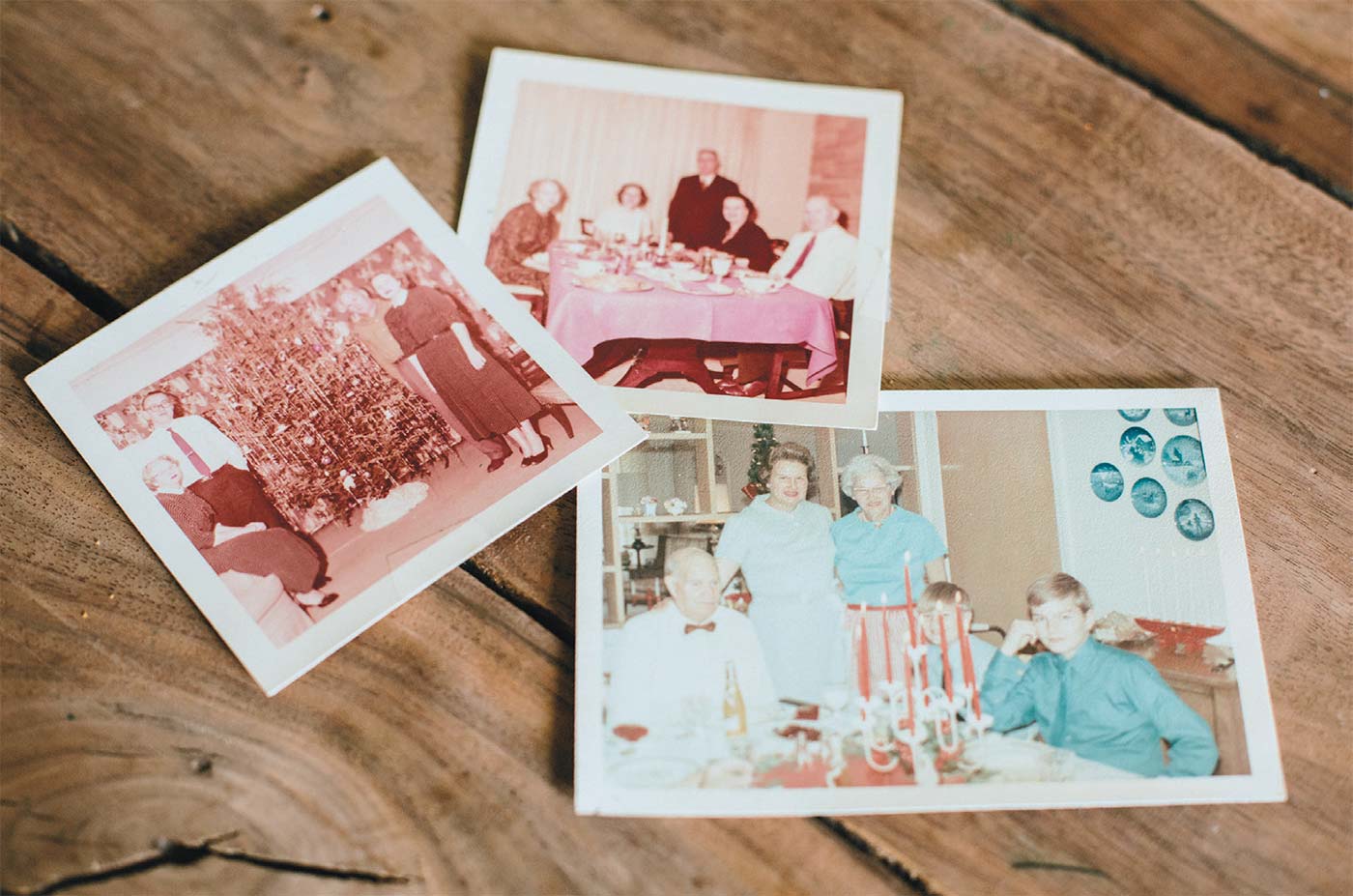
Vintage photographs of the Lindgren family celebrating Swedish traditions and Christmas together. Photography: Hiedi Nguyen.
EMBRACING SWEDISH CULTURE
Swedish tradition is not just a childhood relic or something her parents care about, though. Hannah now embraces the culture herself, a development that began with food. After being diagnosed with a digestive disorder in college, Hannah began to think about food differently. She began eating more locally, eliminating certain types of foods and cooking more at home. As food became more of passion for her, she found herself gravitating toward Swedish foods and flavors.
“I love the classic Midsommar meal: Knäckerbröd, a flat crackery bread, with a spread and some smoked salmon. I love fish, and I love the smoked flavor. I love the dill flavors and the pickling: pickled cucumbers, pickled beets, pickled fish, pickled everything,” Hannah says. “The Swedish meatballs from Christmas smorgasbord also are seasoned interestingly, and I love the cinnamons, the nutmegs, the cardamoms. Those are all flavors I really like.”
Hannah also recently became a member of SVEA Lodge No. 253 herself and even serves on the board. Last year, she helped organize and produce a Swedish cookbook as a fundraiser for the lodge. They gathered 60 recipes from several different families, including recipes for foods that Swedish Americans rarely make at home anymore (see recipes in sidebar and below).
“It was interesting to see recipes for a lot of the things we now buy from Ikea instead of making, like limpa, which is a type of bread, or pickled herring,” she says. “People used to pickle the herring themselves.” But even more than what Hannah does, being Swedish is an important part of who she is.
“The last time I went to Sweden, over and over again I got mistaken for being a local. That just makes me happy,” Hannah says. “Not only have I kept the traditions alive, but I feel like I really am Swedish. It’s always been part of my identity.”
WHAT'S ON A JULBORD?
A traditional Julbord, or Swedish Christmas smorgasbord, is loaded with the rich, hearty foods of winter. Here are a few of the dishes that show up on the Julbord of Hannah Lindgren’s family.
Dill potatoes
Kaffe Bulla, Swedish coffee bread
Kanelbulle
Glögg
Gravy
Limpa with butter
Lingonberry Sauce
Lutefisk
Pepparkakor
Pickled herring
Prinzkorv, or prince sausage
Saffron Buns
Swedish Brown Beans
Swedish meatballs
